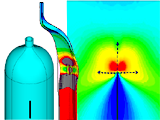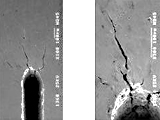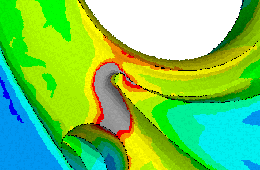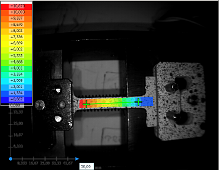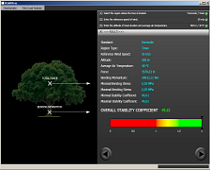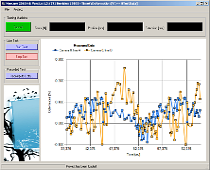Design and support
Design
We provide all activities related to prototype design, prototype drawing and production documentation for both low volume and mass volume production. Our designers work on projects for:
- Automotive
- Footwear Industry
- Aeronautical
- Areas of the Civil engineering industry
We are able to provide complete products and temporary or permanent placement of our experts at a customer's site.
Personnel contracting
We offer personnel support directly on the customer's premises to carry out project activities in the fields of CFD and FEM simulations, development of computational models and other activities during product development. Based on contractor agreements, we are ready to provide required number of appropriately trained experts for both short-term and long-term stay at the customer. Typical customer requirements for contractors are: CFD analyst, FEM analyst, mesher (CFD / FEM), an analyst for thermodynamic calculations, an analyst for the thermo-mechanical calculations and so on.
Risk analysis
Integral part of our activities is the development of risk analysis and FMEA documents as required.
Risk analysis - the risk usually doesn't exists in isolation, but it is a combination of risks that may eventually present a threat to the subject. It is necessary to evaluate risks in terms of their possible impact and likelihood of occurrence (including combinations thereof) and focus on key risk areas and suggest countermeasures.
FMEA - The focus of this method lays already in the process of developing a new product, when we define all possible defects (including the manufacturing process), these defects will be assessed in terms of possible impact and likelihood of occurrence and according to the Pareto principle we focus on the most significant ones and in advance propose countermeasures.
Numerical model preparation

 CAD data at the construction output include many, for the CFD and FEM analysis often unnecessary, respectively unimportant details. For preparation of meshes it is therefore appropriate to separate only data important for the analysis and prepare simplified geometry of the computational model.
CAD data at the construction output include many, for the CFD and FEM analysis often unnecessary, respectively unimportant details. For preparation of meshes it is therefore appropriate to separate only data important for the analysis and prepare simplified geometry of the computational model.
Separation of the necessary data and model preparation is done in software ANSA (BETA CAE Systems S.A.). The input data for models preparation are required in data format, which represents output of most modelers :
- iges, igs
- step, stp
- vda, vdafs
- ansa
Numerical model preparation for CFD / FEM
Since good results of CFD / FEM analysis strongly depend on the quality of meshes, it is necessary to create correct mesh on the pre-geometry model.
With regard to the computation type we create CFD / FEM meshes of specific size, structure and elements quality. Our capacity allows us to create meshes up to the size of 80 million volume cells. We can create meshes for both stationary calculations, as well as for non-stationary calculations and moving meshes.
As a traditional tool for creating structured, unstructured hybrid surface, volume and moving meshes we use ANSA, TGrid and GAMBIT software, in which we are ready to prepare meshes for your numerical simulations.
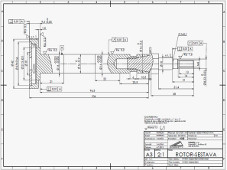



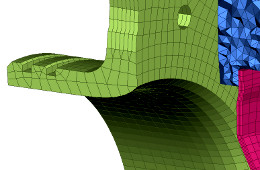

 In the area of internal aerodynamics we concentrate on the flow of gases and liquids in confined spaces. In general cases, it is necessary to solve problems with medium compressibility, viscosity, turbulent behavior and other nonlinearities, which ranks the area to difficult subjects, not just to engineering applications. The aim of our optimization is usually to find a suitable channel shape for optimal gas flow, in order to meet defined requirements such as minimum pressure loss, maximizing the flow etc. We also provide optimization of flow in the space within motor vehicles with the aim of more efficient cooling and we suggest shapes of exhaust grilles in ventilation circuits of cars.
In the area of internal aerodynamics we concentrate on the flow of gases and liquids in confined spaces. In general cases, it is necessary to solve problems with medium compressibility, viscosity, turbulent behavior and other nonlinearities, which ranks the area to difficult subjects, not just to engineering applications. The aim of our optimization is usually to find a suitable channel shape for optimal gas flow, in order to meet defined requirements such as minimum pressure loss, maximizing the flow etc. We also provide optimization of flow in the space within motor vehicles with the aim of more efficient cooling and we suggest shapes of exhaust grilles in ventilation circuits of cars.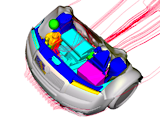
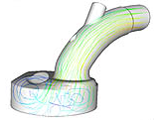


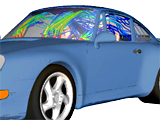
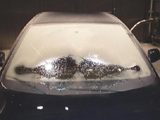


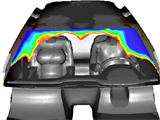
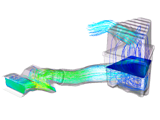
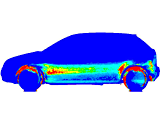
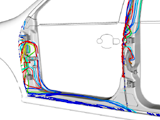

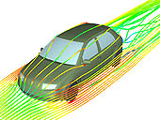
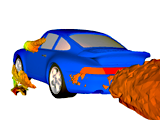
 Flow of liquids and gases in industrial applications is often accompanied by the emergence of unwanted noise. This is caused by slight pressure pulsations in the liquid, which usually bear several
Flow of liquids and gases in industrial applications is often accompanied by the emergence of unwanted noise. This is caused by slight pressure pulsations in the liquid, which usually bear several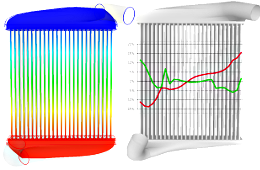
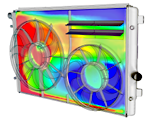
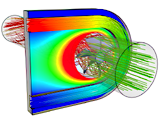



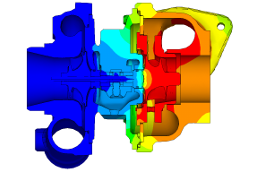
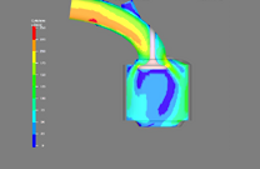

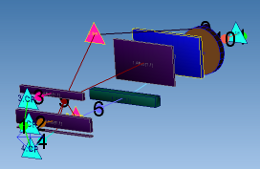
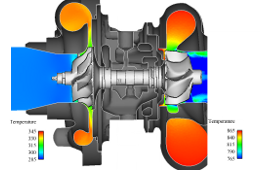
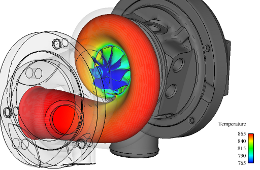

 Many practical problems is of a multidisciplinary nature, when interaction of fluid and structural mechanics occurs. This interaction is realized by forceful action of the current field (flow pattern) on structural component and heat transfer from the current field to structural parts. In the
Many practical problems is of a multidisciplinary nature, when interaction of fluid and structural mechanics occurs. This interaction is realized by forceful action of the current field (flow pattern) on structural component and heat transfer from the current field to structural parts. In the 